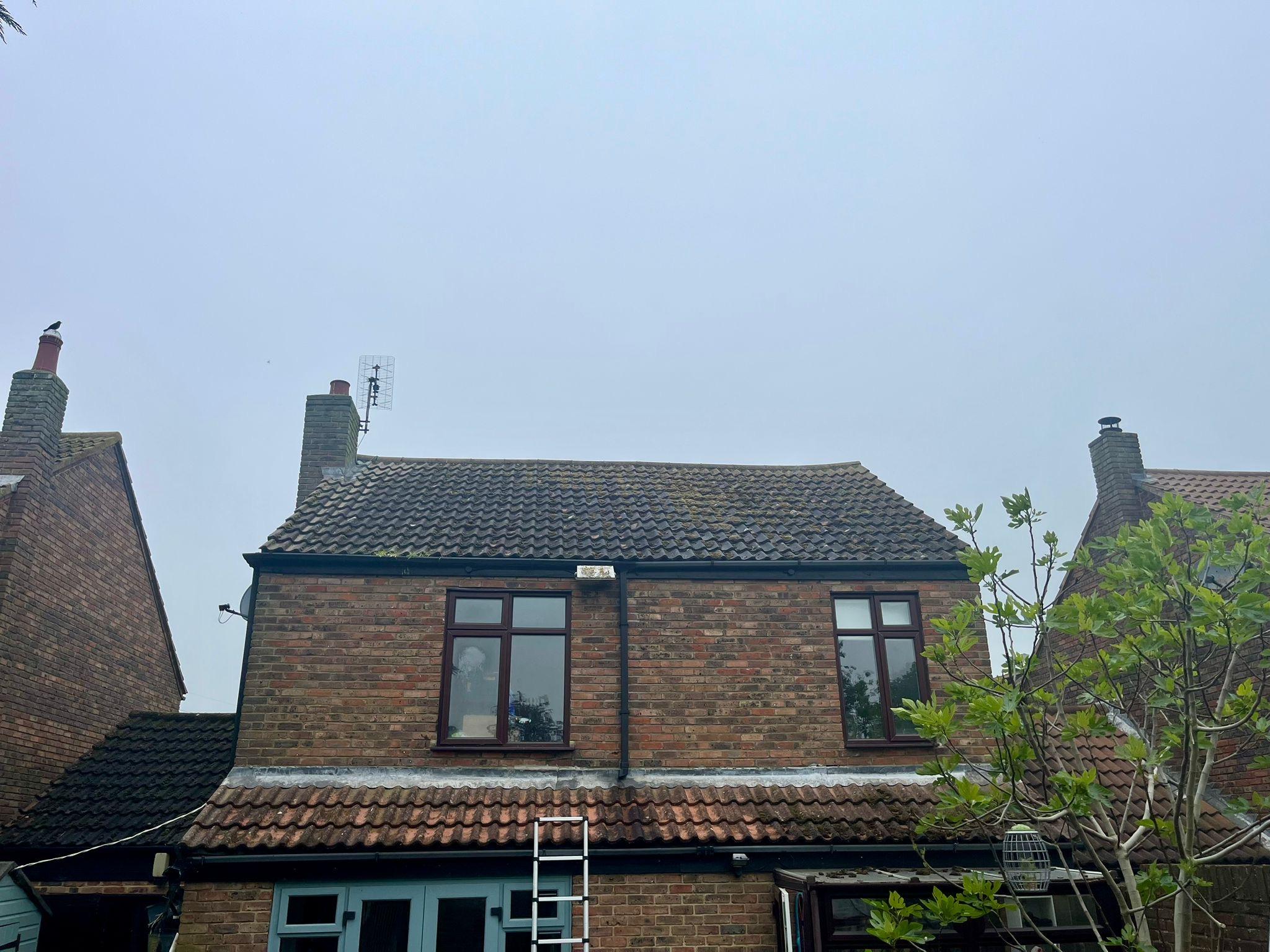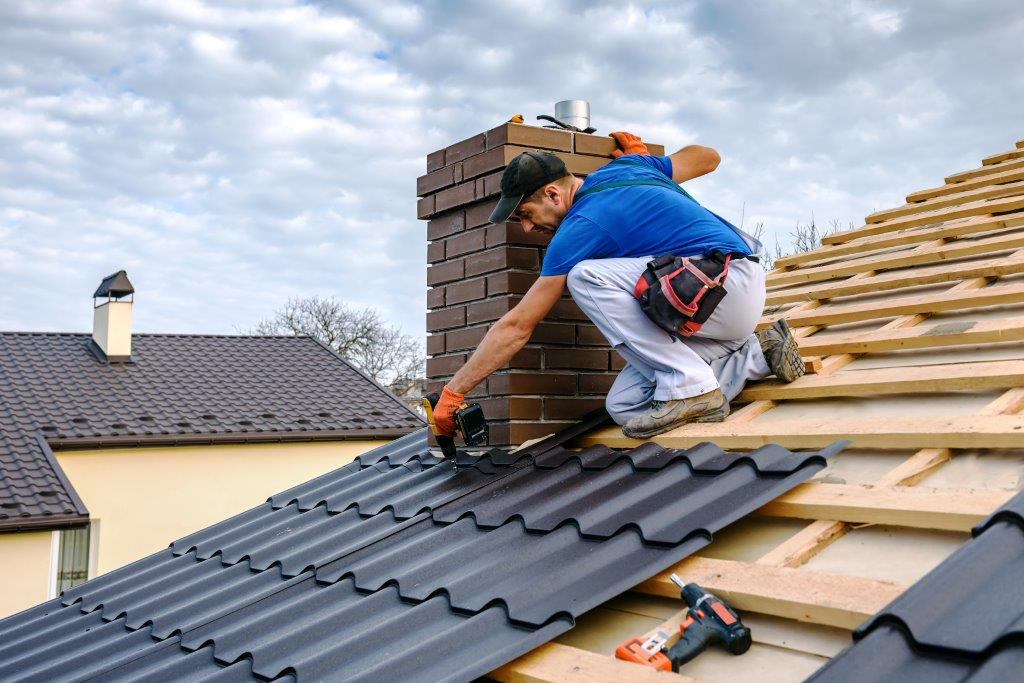Roofing professionals typically follow a guideline of 1/4 inch of sagging per 10 feet of roof for asphalt shingle roofs. However, any amount of roof sag is a cause for concern and should be addressed. Here’s what homeowners need to know about acceptable roof sag. Credit: BuildHub Self Build Forum Roofing professionals typically follow a guideline of 1/4 inch of sagging per 10 feet of roof for asphalt shingle roofs. Based on industry standards, our experts believe sagging over 1/4 inch per 10-foot run is a warning sign of issues needing attention. We recommend annual inspections and addressing any sagging right away before it worsens. Heavy roof coverings like concrete tile can cause sagging over time due to the weight. But even a few inches of sag on a shingled roof indicates issues. The roof’s plywood decking or truss system may be failing under the strain. It’s possible to repair a sagging roof, but extensive rot or a high cost may make full replacement the better option. Monitoring your roof regularly for signs of sagging is essential to catch problems early. While a small amount of sag over a large span is normal, any visible sagging is cause for concern. Addressing it promptly can save homeowners bigger headaches down the road. Credit: We Care Home Improvements There are several potential causes of roof sagging that homeowners should be aware of: Regular inspections and addressing any issues early are key to preventing excessive roof sag. Consulting a professional roofer at the first sign of trouble can help avoid serious structural damage down the line. Determining the severity of any roof sag is crucial. Even a slight dip likely means some intervention is needed. There are a few methods to accurately measure the amount of sag: Measuring at multiple locations along the roof provides the full picture. Documenting with photos is also helpful. Knowing the amount of sag allows proper repairs to be made before further damage occurs. When a roof begins to sag, it is a sign of potential structural issues that require attention. Even minor sagging can lead to a range of problems if left unaddressed: The extent of the damage depends on how far the roof has sagged. That is why periodic measurements are recommended to catch problems early. Addressing sagging promptly prevents further deterioration and expensive repairs down the road. If you find your roof is sagging, even slightly, it’s important to take action before the problem worsens. Here are some solutions to consider: The best solution depends on the extent of the sagging, roof design, and budget. In many cases, reinforcing the existing roof structure is preferable to a full replacement. Consulting a structural engineer is recommended to assess the root cause and specify proper repairs. Acting quickly to fix a sagging roof will prevent further damage and avoid the high costs of emergency repairs down the road. Keeping up with regular roof maintenance and inspections allows sagging to be caught early. A sagging roof is a serious issue that should not be ignored. Over time, sagging can cause further damage to the roof structure and allow water to penetrate into your home. Addressing sagging early is important to prevent more costly repairs down the road. Sagging typically indicates issues with the roof structure itself. Deteriorated or damaged roof decking, issues with roof framing, or additional weight from roofing materials commonly cause these problems. The roof system is no longer structurally sound necessitates intervention due to sagging. The time to fix a sagging roof depends on the extent of the damage and the type of repair needed. Small isolated areas may take 1-2 days. More extensive sagging across large sections could take several days to over a week to fully repair and replace damaged sections. In many cases, yes. If the sagging is minimal, adding supports, removing excess weight, and re-securing decking and shingles may fix it. For more severe sagging, sections of decking and shingles may need replacement. If the roof is too deteriorated, it may require a full replacement. An inspection is necessary to determine the optimal solution between repair and replacement. In conclusion, roof sagging should not be taken lightly. Generally, experts recommend no more than 1/4 inch of sag per 10 feet of roof. Any visible sagging is a red flag and sign of potential structural issues that require attention. Addressing problems early can allow for repairs, but extensive sagging may require full roof replacement. Monitoring your roof and having regular inspections are key to catch sagging in time and preventing costlier long-term damage.
How Much Roof Sag Is Acceptable?

Key Points
Our Opinion
How Much Roof Sag Is Acceptable in the UK?
Causes of Roof Sagging

Measuring Roof Sag
Impact of Roof Sagging
Solutions for Sagging Roofs
FAQ
How serious is a sagging roof?
What does it mean if your roof is sagging?
How long does it take to fix the sagging roof?
Can you fix a sagging roof?
Conclusion
